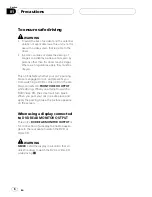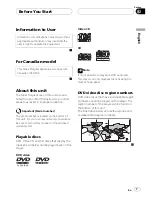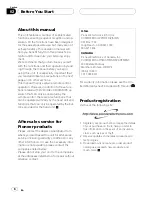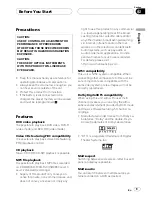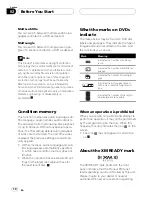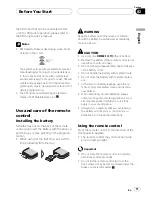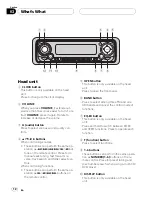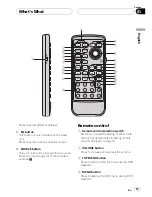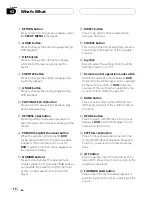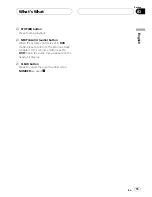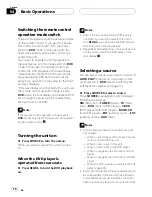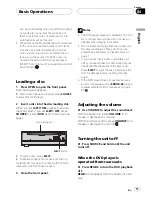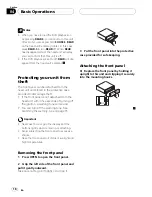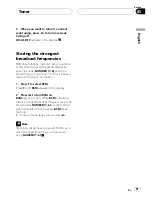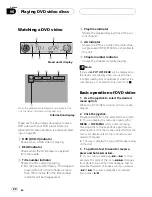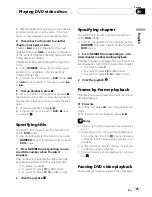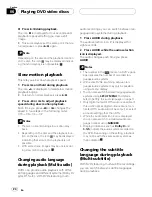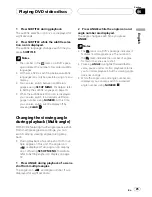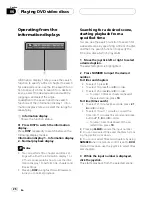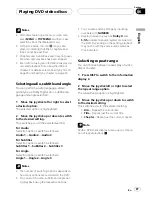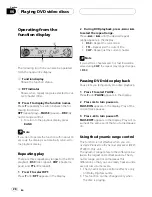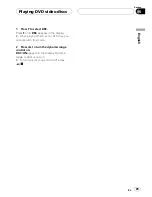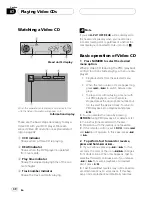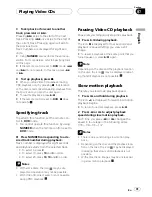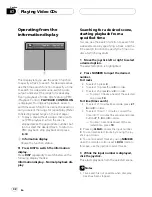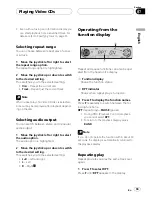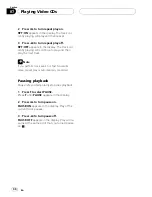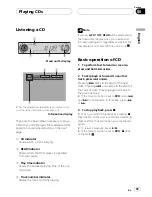
Introduction of advanced
tuner operation
1
2
1
Function display
Shows the function status.
2
LOC indicator
Shows when local seek tuning is on.
%
Press F to display the function names.
Press
F
repeatedly to switch between the fol-
lowing functions:
BSM
(best stations memory)
LOCAL
(local
seek tuning)
#
To return to the frequency display, press
BAND
.
Note
If you do not operate the function within about 30
seconds, the display is automatically returned to
the frequency display.
Storing and recalling
broadcast frequencies
If you press any of the
NUMBER (1
6)
you can
easily store up to six broadcast frequencies for
later recall with the touch of a button.
%
When you find a frequency that you
want to store in memory press a NUMBER
(1
6) and hold until the preset number
stops flashing.
The number you have pressed will flash in the
preset number indicator and then remain lit.
The selected radio station frequency has been
stored in memory.
The next time you press the same
NUMBER
(1
6)
the radio station frequency is recalled
from memory.
Notes
!
Up to 18 FM stations, 6 for each of the three
FM bands, and 6 AM stations can be stored in
memory.
!
You can also use
q
and
r
to recall radio
station frequencies assigned to
NUMBER
(1
6)
.
Tuning in strong signals
Local seek tuning lets you tune in only those
radio stations with sufficiently strong signals
for good reception.
1 Press F to select LOCAL.
Press
F
until
LOCAL
appears in the display.
2 Press
r
to turn local seek tuning on.
Local seek sensitivity (e.g.,
LOCAL 2
) appears
in the display.
3 Press
m
or
n
to set the sensitivity.
There are four levels of sensitivity for FM and
two levels for AM:
FM:
LOCAL 1
LOCAL 2
LOCAL 3
LOCAL 4
AM:
LOCAL 1
LOCAL 2
The
LOCAL 4
setting allows reception of only
the strongest stations, while lower settings let
you receive progressively weaker stations.
Tuner
En
20
Section
05

